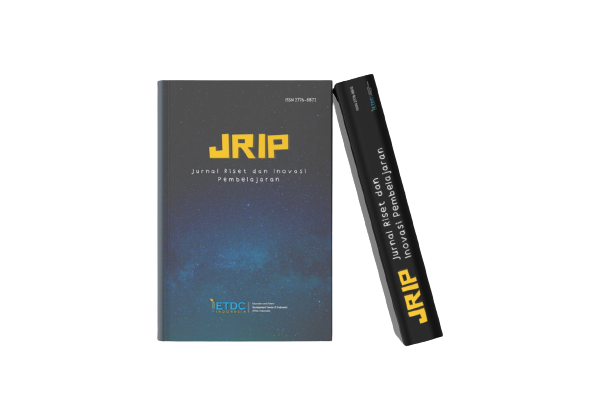Analysis of Projek Penguatan Profil Pelajar Pancasila (P5) Implementation
https://doi.org/10.51574/jrip.v4i2.1560
Keywords:
Projek Penguatan Profil Pelajar Pancasila, ImplementationAbstract
This research was conducted to find out how P5 has been running at MTsN 2 Sidoarjo. P5 is a project to strengthen the Pancasila student profile (P5) which is an effort to encourage the achievement of the Pancasila student profile by using a new paradigm through project-based learning, which is the hallmark of the Merdeka Curriculum. This research was conducted using a phenomenological approach. This type of research is qualitative research that looks and hears more closely and in detail the individual's explanation and understanding of their experiences. This phenomenological approach is based on the researcher's interest in studying in more depth the phenomena experienced by key informants. The research was carried out at MTsN 2 Sidoarjo. The informants in this research were the school principal, teacher/facilitator and Team P5. Data collection was carried out using several techniques, namely; (a) observation; (b) interview; and (c) documentation study. To ensure the validity of the data, several efforts are made as follows:(a) extend the data collection period, (b) carry out observations continuously and seriously, (c) triangulating, and (d) involving colleagues in discussions. This research concluded that the module design that was developed independently and the division of roles according to their functions made P5 learning run smoothly, on time and according to plan. The madrasa head together with the P5 Team and PPRA encourage active participation in creating innovation for all teachers involved as facilitators, so that the P5 program runs according to the goals and expectations of this madrasa. In this research, factors were also produced that caused the implementation of P5 to be less than optimal, namely: 1. Lack of facilitators in carrying out literacy, 2. Facilitators did not prepare material, 3. Lack of facilitator supervision of students during the process, 4. Facilitators left the class during learning hours P5.
Downloads
References
Adian, D. G. (2010). Pengantar fenomenologi. Penerbit Koekosan.
Abdullah, Sani Ridwan. 2014. Pembelajaran saintifik untuk kurikulum 2013. Jakarta: Bumi Aksara.
Badan Standar Kurikulum dan Asesmen Pendidikan. (2021). Panduan Pengembangan Projek Penguatan Jenjang Pendidikan Dasar dan Memengah (SD/MI, SMP/MTs, SMA/MA) Profil Pelajar Pancasila. Kementrian Pendidikan Kebudayaan Riset dan Teknologi.
Badan Standar Kurikulum dan Asesmen Pendidikan. (2022). Panduan Pengembangan Kurikulum Operasional di Satuan Pendidikan. Kementrian Pendidikan Kebudayaan Riset dan Teknologi.
Badan Standar Kurikulum dan Asesmen Pendidikan. (2022). Dimensi, Elemen dan Sub Elemen Profil Pelajar Pancasila dalam Kurikulum Merdeka. Kementrian Pendidikan Kebudayaan Riset dan Teknologi.
Creswell J. W. (2016). Research design pendekatan kualitatif, kuantitatif dan campuran.
Yogyakarta: Pustaka Belajar.
Direktorat KSKK Madrasah (2022).Panduan Pengembangan Projek Penguatan Profil Pelajar Pancasila dan Profil Rahmatan Lil Alamin. Dirjend Pendidikan Islam Kementrian Agama Republik Indonesia
https://repo.iainbatusangkar.ac.id/xmlui/bitstream/handle/123456789/27441/1663216595046
_Pengembangan%20Kurikulum%20Merdeka%20WM.pdf?sequence=1
Published
How to Cite
Issue
Section
License
Copyright (c) 2024 Marfuatin Nafiah Nafi

This work is licensed under a Creative Commons Attribution-ShareAlike 4.0 International License.









